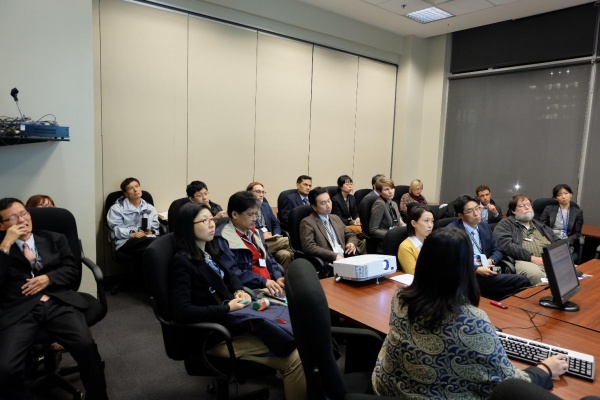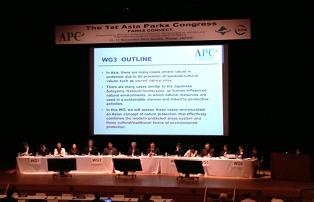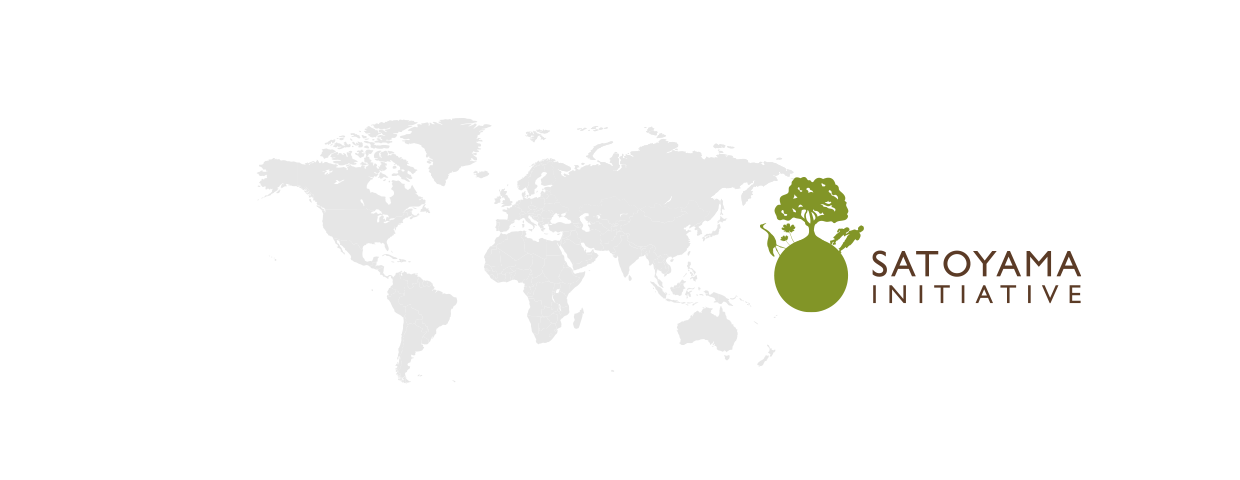Dear subscriber,
Greetings from the IPSI Secretariat, and thank you for subscribing to the IPSI Newsletter. This month's issue contains information about the Satoyama Initiative's recent side event at the Convention on Biological Diversity's Seventeenth meeting of the Subsidiary Body on Scientific, Technical and Technological Advice (CBD SBSTTA17) held from 12 to 18 October in Montreal, Canada, and the 1st Asia Parks Congress, held from 13 to 17 November in Sendai, Japan.
We are also happy to include an introduction to one of the Partnership's newest members, Asociasion Pro Desarroillo Agroindustrial de Camana (APAIC), which works on the restoration of barren landscapes in Peru. Finally, we are pleased to announce that six projects have been chosen to receive grants through the Satoyama Development Mechanism (SDM). We hope you will find the contents interesting and helpful for your SEPLS-related activities.
Thank you for your continued support of IPSI and our members' activities.
IPSI Secretariat

Indicator Development Side Event at CBD SBSTTA17
Members of the Secretariat of the International Partnership for the Satoyama Initiative (IPSI) traveled to Montreal, Canada, to take part in the Convention on Biological Diversity's Seventeenth meeting of the Subsidiary Body on Scientific, Technical and Technological Advice (CBD SBSTTA17) from 12 to 18 October, and took this opportunity to organize a side event entitled "An Indicators Approach to Understanding Resilience of Socio-ecological Production Landscapes and Seascapes: A Community-level Perspective".
This side event highlighted a set of indicators developed by the United Nations University Institute of Advanced Studies (UNU-IAS) and Bioversity International to measure various aspects of resilience in socio-ecological production landscapes and seascapes (SEPLS) at the local level. It also introduced efforts to assess biodiversity at the national level and explore how different types of indicators and assessments can complement each other towards the achievement of the Aichi Biodiversity Targets and the implementation of the ecosystem approach at various scales.
The participants were strongly engaged in the discussion, and several important issues were raised, such as whether the right values and the right scale are the most important factors in seeing tangible outcomes, communication mechanisms with the community, and application to tsunami-affected areas. It was noted how important it is to take note of all of these suggestions while the indicators are still at the initial stage of testing in various approaches and various ecosystems.
An advisory meeting was also held during the conference to discuss the Satoyama Development Mechanism (SDM). Subjects such as how to improve scheduling, review of project proposals, etc. were discussed.

1st Asia Parks Congress, 13-17 November and Side Event
The 1st Asia Parks Congress (APC) was held in Sendai, Japan, to bring together people working with protected areas from around Asia. According to the APC website, "Scheduled exactly one year ahead of the 6th IUCN World Parks Congress, the Asia Parks Congress will serve as a valuable lead-in to the world meet by proposing ways forward based on the lessons learned in Asia."
Members of the IPSI Secretariat took part in the Congress in order to present outcomes of the International Partnership for the Satoyama Initiative (IPSI) and participate in APC Working Groups, input comments from the Working Groups for the next World National Park Congress, organize a side event by Tohoku University and UNU-IAS, and to collect information related to the Satoyama Initiative.
Thanks to our members' participation, the final comments of their Working Groups clearly stated the importance of satoyama and SEPLS for supporting biodiversity and human well-being, and of the Satoyama Initiative and IPSI for promoting the sustainable use of natural resources as a complement and alternative to conventional protected area approaches, including the word “satoyama” as an effective area-based conservation approach.
A side event was held on the evening of 15 November entitled “Post-disaster Restoration and Revitalization: Approach of Satoyama and Satoumi in the Urato Island.” The event was co-hosted by Tohoku University and UNU-IAS, and featured presentations by representatives of Urato Island, which was badly affected by the March, 2011 earthquake and tsunami, about damage to the island and rebuilding efforts, as well as an explanation of rebuilding efforts of SEPLS including local nature, culture and livelihoods in Urato Island.

New Member Introduction: APAIC
IPSI's membership has grown to 155 organizations from the original 52 who started the partnership in 2010. This month, we are pleased to introduce readers to one of our newest members, Asociasion Pro Desarroillo Agroindustrial de Camana (APAIC), which was confirmed as a member at the IPSI-4 conference in September 2013.
APAIC is a non-profit organization that is open to all interested stakeholders. Its membership currently comprises more than 50 small farmers. The main objective of this institution is to provide technical assistance to its members in order to help them to restore barren land landscapes, and to convert to profitable forest areas through reforestation and agroforestry activities, using local native species that could provide alternative income-generating opportunities for the improvement of their livelihood. The Association has an executive board and is headquartered in the city of Camaná Department of Arequipa in the southern coastal area of Peru.
APAIC has established experimental plantations of Caesalpinea spinosa, Casuarina esquesitifolia, Prosopis tamarugo, and olives, species that have shown excellent and even surprising results generating interesting biodiversity in arid zones. Currently, it is working on a project proposal for the use of waste water that could irrigate 500 ha of barren land in benefit of more than 100 hundred poor families, and looking for funding.
In their own words, "We are convinced that restoration of degraded land could be one of the most important contributions to the mitigation and adaptation to Climate Change, and would like to share information and experiences with other IPSI members."
(The image above shows sequential pictures about reforestation with Caesalpinea spinosa on very degraded landscapes at 6 months, 1 year, and 3 years.)
SDM 2013 Project Selection Results
The Executive Board of the Satoyama Development Mechanism (SDM) is pleased to announce the six recipients of grants offered through the SDM 2013. The Board would like to express our sincere gratitude and appreciation to the organisations that submitted project proposals.
From the set of competitive proposals, the following six projects were selected:
Experimenting on Production of High Value Market Products from Indigenous Wild Fruits (Uganda)
Documentation of Biological Resources for Preparation and Piloting of Local Bio-diversity Strategy and Action Plan (LBSAP) in Three Ecological Production Landscapes of Nepal
Supporting and Promoting the Karen Indigenous Socio-ecological Production System in Northern Thailand
Converting Pests as Allies in Tea Farming - A Potential Case of Satoyama Landscape in Hualien, Taiwan
Cultural Landscapes as Vectors for Local Sustainable Development (Russia)
Hosting the Satoyama Initiative Annual Steering Committee Meeting and Global Forum in 2015 (Peru)
Please see the official announcement of the results on our website.



